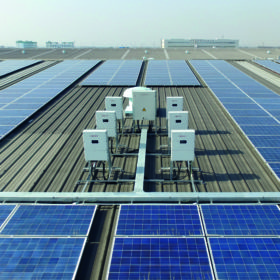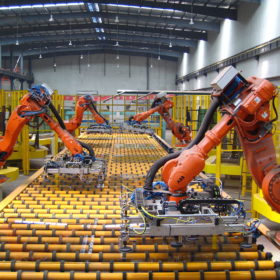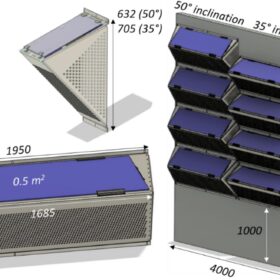Two-layer power trading mechanism to support distributed solar
Researchers in China have proposed a new hybrid transaction model for distributed power trading. The model encourages the participation of aggregators in market transactions for distributed resources and promotes the expansion of distributed energy storage.
Deye debuts new microinverter series
Chinese manufacturer Deye has launched a new microinverter series featuring three models, with PV input capacities ranging from 1,320 W to 2,200 W and output capacities between 600 W and 1,000 W.
India may introduce antidumping duties on PV glass from China, Vietnam
India’s Directorate General of Trade Remedies (DGTR) has proposed antidumping duties on solar glass imports from China and Vietnam. It says the landed cost of such imports aew lower than the selling prices and production costs of Indian manufacturers.
Photovoltaic noise barrier with ZigZag design
A Belgian-Dutch research group has designed a PV noise barrier that reportedly offers a good performance in terms of power yield, drivers’ safety and noise cancellation. Its payback time was estimated at between 6 and 10 years.
Austria deploys 1.4 GW of new solar in January-September period
Austria installed 1.4 GW of new PV capacity from January to September 2024, including around 400 MW added in the third quarter alone.
Solarwatt launches new inverters, batteries
Solarwatt has launched six new inverters and batteries as part of its Solarwatt Home line and outlined its future strategy. The German company, currently in transition, recently closed its solar module plant in Germany and announced staff reductions.
Prefabricated modular balcony for PV systems
Spain-based Tecnalia has designed a balcony that integrates renewable energy systems, ventilation, and smart energy management. The innovative structure allows for the incorporation of sustainable technologies, providing both energy efficiency and environmental benefits.
Phnix presents new residential air-to-water heat pumps
The Chinese manufacturer said its new Heco series uses propane (R290) as a refrigerant and includes five models with a nominal capacity ranging from 6 kW to 17 kW.
Solar tile carport for protected environmental areas
French companies Le Triangle Horizon and SunStyle International are offering a new carport based on solar tiles for areas protected by environmental regulations.
Anti-soiling coating increases PV panel current in arid regions by 64.7%
Scientists in Egypt have created an anti-soiling coating for solar panels by mixing ethanol, deionized water, ammonium hydroxide and tetraethyl orthosilicate. They tested a coated panel outdoors for ten months and found that the panel showed a 64.7% higher current compared to reference modules without coating.










